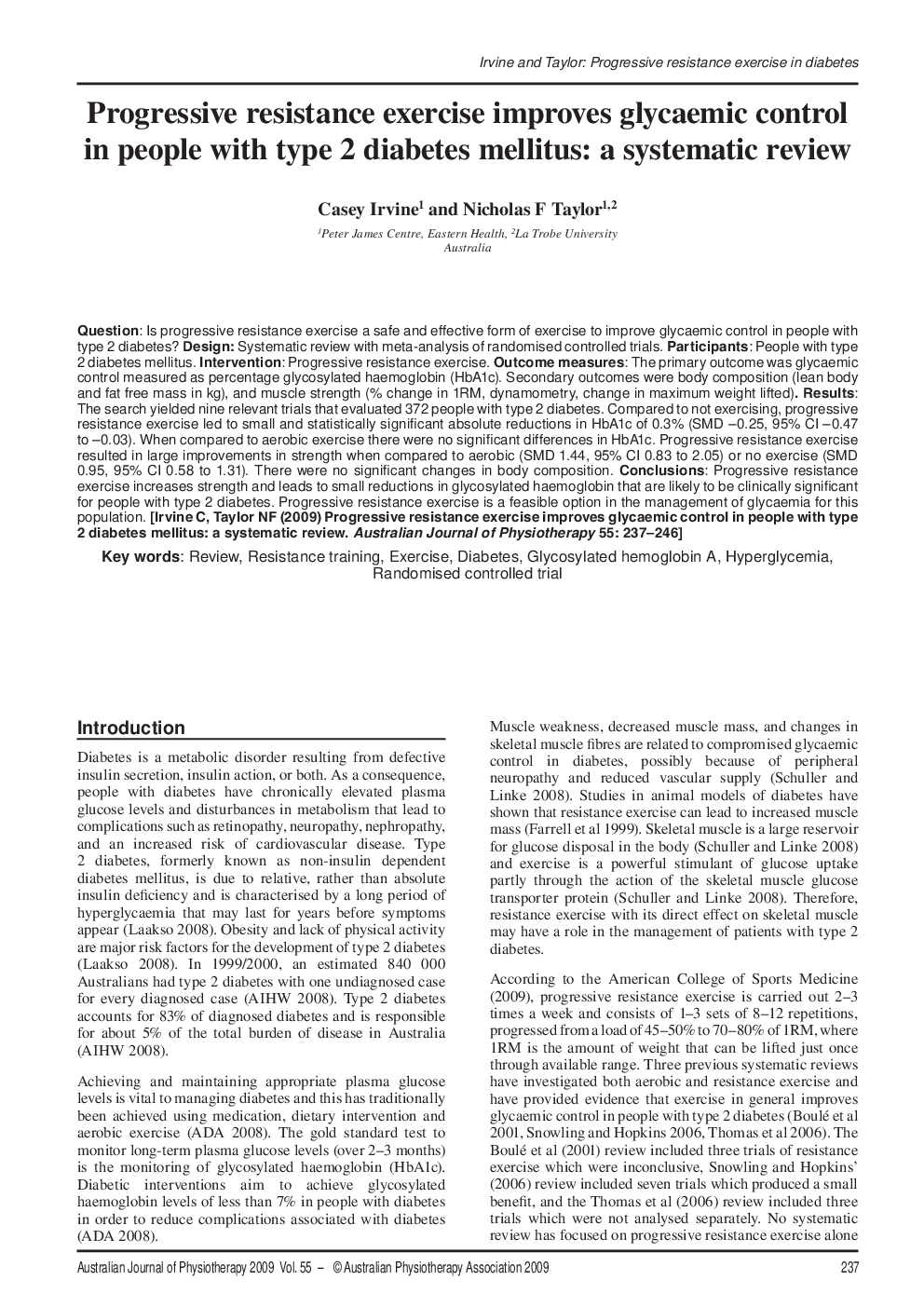| Article ID | Journal | Published Year | Pages | File Type |
|---|---|---|---|---|
| 2701329 | Australian Journal of Physiotherapy | 2009 | 10 Pages |
QuestionIs progressive resistance exercise a safe and effective form of exercise to improve glycaemic control in people with type 2 diabetes?DesignSystematic review with meta-analysis of randomised controlled trials.ParticipantsPeople with type 2 diabetes mellitus.InterventionProgressive resistance exercise.Outcome measuresThe primary outcome was glycaemic control measured as percentage glycosylated haemoglobin (HbA1c). Secondary outcomes were body composition (lean body and fat free mass in kg), and muscle strength (% change in 1RM, dynamometry, change in maximum weight lifted).ResultsThe search yielded nine relevant trials that evaluated 372 people with type 2 diabetes. Compared to not exercising, progressive resistance exercise led to small and statistically significant absolute reductions in HbA1c of 0.3% (SMD –0.25, 95% CI –0.47 to –0.03). When compared to aerobic exercise there were no significant differences in HbA1c. Progressive resistance exercise resulted in large improvements in strength when compared to aerobic (SMD 1.44, 95% CI 0.83 to 2.05) or no exercise (SMD 0.95, 95% CI 0.58 to 1.31). There were no significant changes in body composition.ConclusionsProgressive resistance exercise increases strength and leads to small reductions in glycosylated haemoglobin that are likely to be clinically significant for people with type 2 diabetes. Progressive resistance exercise is a feasible option in the management of glycaemia for this population.
